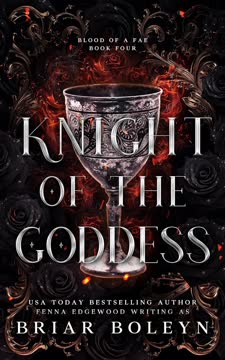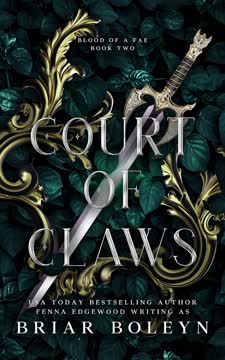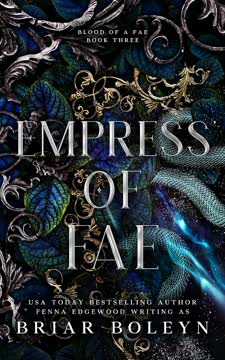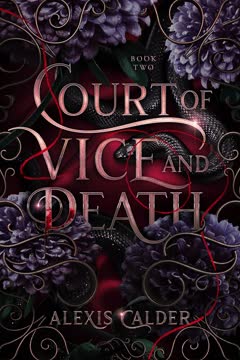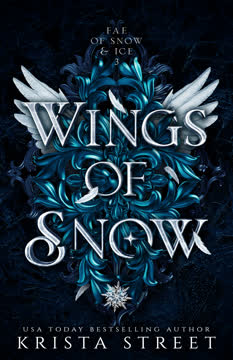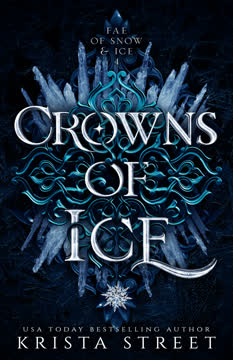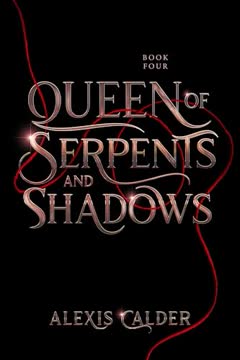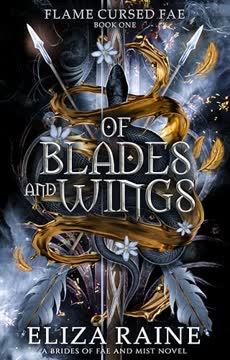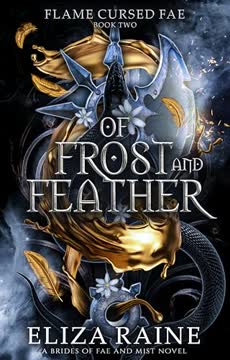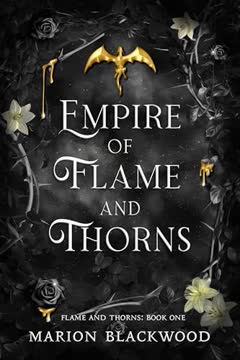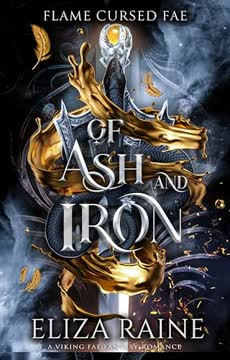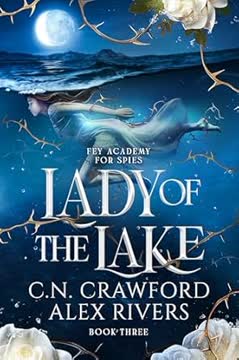Plot Summary
Shadows and Silver Bonds
Morgan le Fay and her mate Draven, now Empress and Prince, try to build a family in the aftermath of war. They care for Medra, Morgan's orphaned niece, while haunted by nightmares and the curse of the Pendragons. Morgan's brother Kaye lies in a magical sleep, and the threat of ancient objects of power—sword, spear, and grail—looms. Morgan's bond with Draven is both her strength and her vulnerability, as their love is tested by grief, guilt, and the ever-present shadow of her true father, Gorlois le Fay, the high fae king. The chapter sets the tone of intimacy, loss, and the heavy burden of destiny.
The Child of Prophecy
Medra, the child of prophecy, grows at an unnatural pace, both physically and in power. She is feared and misunderstood, even by those who care for her. Her presence is a living reminder of the prophecy that foretells the end of kings and the world's fate. Morgan and Draven struggle to protect her, but Medra's anger and isolation deepen. The castle's attempts to integrate her fail, and her connection to the prophecy and the objects of power becomes increasingly ominous. Medra's loneliness and the world's fear of her foreshadow the tragic choices to come.
Exmoors and Exiles
Morgan and Draven's circle includes not only human and fae allies but also the rare exmoor battlecats, Nightclaw and Sunstrike. The exmoors become symbols of loyalty and the wild, untamable forces at play. The group's bonds are tested as they prepare for a journey into the unknown, seeking to destroy the objects of power and confront Gorlois. The exmoors' presence offers both comfort and a reminder of the cost of war, as their injuries and resilience mirror the scars of their human companions.
The Goddess's Temple
Morgan visits the temple of the Three, seeking guidance from Guinevere, the new High Priestess. The temple, haunted by memories of Merlin and violence, offers little comfort. Guinevere's wisdom is limited; the fate of the objects and Kaye's life remain uncertain. The gods' silence and the ambiguity of prophecy leave Morgan with more questions than answers. The chapter explores faith, doubt, and the limits of mortal and fae knowledge, as well as the shifting roles of power among women.
Nightmares and Newborns
Morgan's nightmares intensify, blurring the line between dream and reality. She is haunted by visions of her father, the burning of her sanctuary, and the threat to her loved ones. Draven's own fears surface as he trains obsessively, desperate to protect Morgan and Medra. Their intimacy is both a refuge and a battleground, as grief and desire intermingle. The chapter delves into the psychological toll of trauma, the struggle to find hope, and the ways love can both heal and wound.
The Weight of Power
Morgan grapples with the responsibilities of leadership and the moral cost of power. She is torn between her duty to destroy the objects and her fear of harming Kaye. The group faces attacks, betrayals, and the ever-present threat of Gorlois's influence. Morgan's relationships—with Draven, Lancelet, Guinevere, and others—are strained by secrets and the burden of command. The chapter explores the complexities of agency, sacrifice, and the price of survival in a world shaped by prophecy and violence.
The Black Mountain Beckons
The quest leads Morgan, Draven, and their companions to Rheged and the Black Mountain, seat of Gorlois's power. The journey is marked by loss—of allies, innocence, and hope. The landscape is scarred by war and the corruption of fae magic. Refugees, ruined villages, and monstrous transformations reveal the depth of Gorlois's cruelty. The group's unity is tested as they face supernatural threats and the psychological weight of their mission. The mountain itself becomes a symbol of fate and the inescapable pull of destiny.
Blood and Betrayal
Morgan confronts her father in dreams and reality, uncovering the truth of her origins and the nature of the objects of power. The court of Gorlois is a place of decadence, cruelty, and ancient wounds. Siblings become enemies; betrayals are revealed. The spear, sword, and grail are not mere artifacts but extensions of the gods' own bodies and souls, forged in blood and loss. Morgan's struggle is not only against her father but against the legacy of violence and the temptation to become what she hates.
The Siege of Brightwind
The kingdom of Tintagel is besieged by Gorlois's monstrous armies—fae, mortals, and abominations. Morgan and Draven, riding the exmoors, become symbols of hope and terror as they unleash fire and shadow upon the enemy. The battle is brutal and costly, with allies falling and the true power of the objects revealed. The arrival of fae siblings and the unleashing of the spear's legacy escalate the conflict. The chapter is a crescendo of violence, sacrifice, and the thin line between heroism and monstrosity.
Siblings and Spears
Morgan faces her fae siblings—Daegen, Tempest, Lorion—each a weapon of Gorlois, each a reflection of what she might become. The battles are as much psychological as physical, with love, envy, and the hunger for power driving the siblings to destroy one another. The spear's true nature is revealed: it is not an object, but a person—Medra, the child of prophecy, created to be the ultimate weapon. The chapter explores the tragedy of family twisted by ambition and the impossibility of escaping one's blood.
The Fall of the Grail
Morgan, aided by the goddess Zorya, destroys the grail in a ritual of blood and fire. The act unleashes chaos, collapsing the boundaries between mortal and divine, past and present. The destruction of the grail comes at a cost—Zorya's release, the unleashing of new horrors, and the loss of Morgan's own powers. The group is scattered, the mountain crumbles, and the final confrontation with Gorlois looms. The chapter is a meditation on the price of breaking cycles of violence and the hope of redemption.
The Court Above the Clouds
Morgan and Draven are drawn into Gorlois's floating palace, where the true nature of the gods is revealed. Vela, the goddess of the fae, and Gorlois/Perun, the god of thunder, are exposed as ancient, flawed beings—monsters, not creators. The court is a place of temptation, memory, and the final test of loyalty. Draven breaks free of Vela's hold, and Morgan claims her identity as Marzanna, goddess of death. The chapter is a reckoning with immortality, love, and the limits of power.
The End of Immortals
The last confrontation unfolds in the sacred grove, where Morgan, Draven, and Medra face Gorlois. The spear is revealed to be Medra herself, the ultimate weapon and sacrifice. The battle is apocalyptic—lightning, fire, and shadow tearing the world apart. Medra, embracing her fate, sacrifices herself to destroy Gorlois and end the cycle of violence. The gods are unmade, the objects of power destroyed, and the world is left to mortals and fae to rebuild. The chapter is both an ending and a beginning.
The Price of Sacrifice
In the aftermath, Morgan and Draven return to a world forever changed. The losses are immense—Medra, Nightclaw, Gawain, Rychel, Odessa. The survivors struggle to find meaning and hope. Morgan is crowned queen, but the weight of sacrifice lingers. The chapter is a meditation on grief, the impossibility of undoing the past, and the fragile hope that comes from love and memory. The world is at peace, but the scars remain.
The Queen of Roses
Morgan is crowned Queen of Pendrath, ruling in Kaye's stead. The court is filled with old friends and new alliances. The memory of Medra is honored in art and ritual, and the wounds of war begin to heal. Morgan's leadership is marked by compassion, wisdom, and the refusal to repeat the mistakes of the past. The chapter is a celebration of resilience, the power of found family, and the promise of a better future.
Medra's Gallery
Crescent and Galahad create a gallery of Medra's life, capturing the child's brief, brilliant existence in art. Morgan and Draven confront their grief, finding solace in memory and the knowledge that Medra was loved. The gallery becomes a place of healing, a testament to the possibility of beauty and meaning even in loss. The chapter is a quiet, emotional coda to the epic, focusing on the small acts of remembrance that sustain hope.
Love Beyond Death
In the final scenes, Morgan and Draven reflect on their journey, the meaning of love, and the mysteries that remain. Their bond, forged in blood and sacrifice, endures beyond death and loss. The world is changed, but the promise of love and the possibility of new beginnings remain. The story ends with a celebration, a dance, and the quiet certainty that, whatever comes, love is the greatest adventure.
Characters
Morgan le Fay
Morgan is the heart of the story—a woman marked by prophecy, trauma, and the legacy of both mortal and fae blood. As Empress of Myntra and Queen of Pendrath, she is a leader who never sought power, shaped by loss and the burden of destiny. Her relationships—with Draven, Medra, Kaye, and her friends—reveal her deep capacity for love and sacrifice. Psychologically, Morgan is defined by guilt, resilience, and the struggle to reconcile her humanity with the divine power within her. Her arc is one of self-acceptance, the refusal to become a monster, and the courage to break cycles of violence, even at great personal cost.
Draven (Kairos Draven Venator)
Draven is Morgan's perfect complement—a fae prince haunted by his own losses, marked by darkness and the capacity for both tenderness and violence. His love for Morgan and Medra is fierce and self-sacrificing, but he is also tormented by the fear of failing those he loves. Draven's psychological complexity lies in his struggle to balance his monstrous power with his humanity, his need for control with his vulnerability. His arc is one of healing, learning to accept love, and ultimately choosing hope over despair.
Medra
Medra is both the spear and the sacrifice—a child created to fulfill a prophecy, growing too fast and burdened with power she never asked for. Feared, isolated, and misunderstood, Medra's anger and loneliness are deeply human, even as she is shaped by divine forces. Her arc is one of self-discovery, the longing for love, and the ultimate act of agency—choosing to sacrifice herself to end the cycle of violence. Medra embodies the tragedy of being made for a purpose not her own, and the hope that even the most cursed can choose their own fate.
Gorlois le Fay (Perun)
Gorlois is the story's great antagonist—a being of immense power, cruelty, and ambition. He is both Morgan's father and the architect of the world's suffering, driven by the hunger for dominion and the inability to love. Psychologically, Gorlois is a study in narcissism, the terror of mortality, and the emptiness of power without connection. His court is a reflection of his own corruption, and his downfall is both a personal and cosmic reckoning.
Vela
Vela is the goddess of the fae, Draven's former mate, and a symbol of the dangers of immortality without empathy. Her love is possessive, her power seductive and destructive. Vela's psychological profile is marked by envy, the inability to let go, and the refusal to accept change. Her conflict with Morgan and Draven is both personal and mythic, culminating in her violent end.
Guinevere
Guinevere is a figure of faith, wisdom, and sacrifice. As High Priestess, she guides Morgan and the group, offering what comfort and knowledge she can. Her relationship with Lancelet is a source of tenderness and hope. Psychologically, Guinevere is defined by her resilience, her willingness to bear others' burdens, and her struggle to balance duty with desire.
Lancelet
Lancelet is Morgan's oldest friend, a warrior marked by trauma and the search for belonging. Her love for Guinevere is a source of vulnerability and strength. Lancelet's arc is one of healing, learning to accept love, and finding purpose beyond violence. She is fiercely loyal, often blunt, and a grounding presence in the group.
Nightclaw
Nightclaw is more than a beast—he is a companion, protector, and symbol of the wild, untamable forces that shape the story. His bond with Morgan and Draven is deep, and his sacrifice in the final battle is a moment of profound loss. Nightclaw embodies the themes of loyalty, the cost of war, and the possibility of connection across boundaries.
Crescent
Crescent is Medra's caretaker, a man who loves deeply but is haunted by the sense of having failed those he was meant to protect. His relationship with Medra is fraught, marked by misunderstanding and regret. Crescent's arc is one of seeking redemption, honoring the dead, and learning to forgive himself.
Kaye
Kaye is Morgan's brother, trapped in magical sleep and freed only at great cost. He is a symbol of innocence lost, the possibility of renewal, and the hope for a better future. Kaye's refusal of the throne is an act of wisdom, allowing himself the childhood Morgan never had. His arc is one of healing, humility, and the quiet courage to choose a different path.
Plot Devices
Prophecy and the Objects of Power
The story is driven by the prophecy of the child who will end kings and the world, embodied in Medra. The objects of power—sword, spear, and grail—are not mere artifacts but extensions of the gods' own bodies and souls, forged in blood and betrayal. The prophecy shapes characters' choices, justifies violence, and becomes a self-fulfilling curse. The destruction of the objects is both a literal and symbolic breaking of the cycle of violence and the gods' hold over the world.
Duality and Mirrors
The narrative is structured around dualities—mortal and fae, love and power, creation and destruction, parent and child, self and other. Characters are often mirrored in their enemies and allies: Morgan and Gorlois, Draven and Vela, Medra and the spear. The use of dreams, visions, and true dreamings blurs the line between reality and imagination, past and present, self and ancestor. The story's structure echoes these dualities, with parallel journeys, mirrored sacrifices, and the constant threat of becoming what one hates.
Sacrifice and Agency
Sacrifice is a central plot device—characters are constantly asked to give up power, love, or even their lives for the greater good. The story interrogates the meaning of agency: are the characters truly free, or are they bound by prophecy, blood, and the will of the gods? The destruction of the objects and the gods themselves is an act of reclaiming agency, but it comes at a terrible cost. The narrative structure uses foreshadowing, repetition, and the motif of the altar to reinforce the inevitability and tragedy of sacrifice.
Found Family and Healing
Against the backdrop of violence and loss, the story foregrounds the power of found family—Morgan, Draven, Medra, and their friends form bonds that transcend blood and fate. The healing of trauma, the refusal to repeat the mistakes of the past, and the choice to love in the face of despair are recurring themes. The narrative uses moments of intimacy, humor, and ritual (such as the gallery of Medra) to offer hope and the possibility of renewal.
Analysis
Knight of the Goddess is a sweeping, emotionally charged fantasy that interrogates the nature of power, prophecy, and love in a world shaped by both mortal and divine forces. At its core, the novel is a meditation on the cost of breaking cycles of violence and the possibility of forging a new future from the ashes of the old. Through Morgan's journey—from haunted survivor to reluctant goddess to wise queen—the story explores the psychological toll of trauma, the seduction and danger of power, and the redemptive potential of love and found family. The destruction of the objects of power and the gods themselves is both a literal and symbolic act of liberation, freeing the world from the tyranny of fate and the legacy of abuse. Yet the novel refuses easy answers: every victory is marked by loss, every act of agency comes at a price, and the scars of the past linger. Ultimately, Knight of the Goddess is a story about the courage to choose hope, the necessity of grief, and the enduring strength of love—even, and especially, in the face of death. It is a powerful reminder that the greatest adventure is not the quest for power, but the journey toward healing, forgiveness, and the creation of a better world.
Last updated:
Review Summary
Knight of the Goddess receives mixed reviews as the final book in the Blood of a Fae series. Many readers praise the world-building, character development, and epic conclusion to Morgan and Draven's story. However, some criticize rushed plot points, abrupt character deaths, and unresolved storylines. The book features intense action, plot twists, and emotional moments. While some found it a satisfying end to the series, others felt it didn't live up to expectations. Overall, the series remains popular among fans of fantasy romance and Arthurian retellings.
